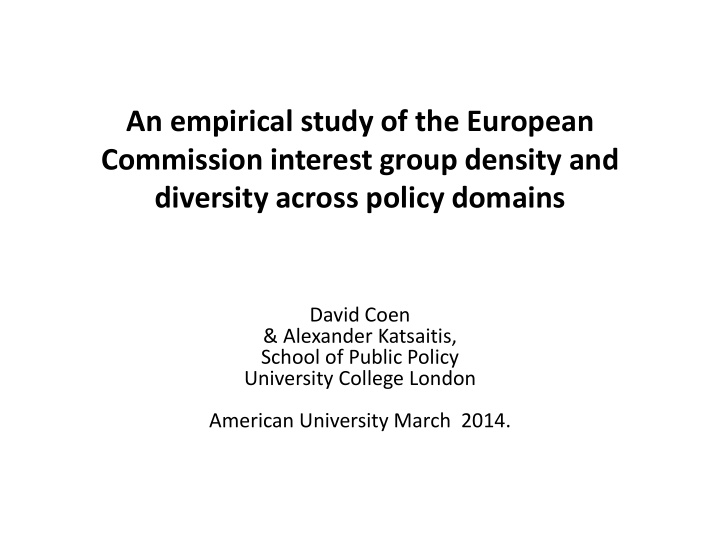



An empirical study of the European Commission interest group density and diversity across policy domains David Coen & Alexander Katsaitis, School of Public Policy University College London American University March 2014.
Density and Diversity across Policy domains. • Explosion of research over the past 20 years system density. – Elite Pluralism . – Informational approaches particularly useful – Different institutions demand different types information provided by different interests groups (Bouwen 2002) – Looked at the Supply of lobbying /variance in actors Coen 1997/2007 • But also see density and diversity variation at EU sub-system. – Greater demand of information greater supply of interests (Coen 2007/13). – To remain legitimate the Commission must balance - Output legitimacy: quality of policy (technical information) - Input legitimacy: consensus over policy (political information) Fn. Characteristics of different policy domains [ Age, Staff Size, Distributive/ Regulatory, MS involvement ] dictate the type of legitimacy and therefore the interest group clusters.
Figure 1. % of Interest Groups per Type. �
No. of Groups per Type per Domain
Conclusions/ Further Research • Empirical evidence of diversity of the interest group population across policy domains and variables that affect it. • Chameleon pluralism & the flexibility it offers defines much better interest representation model for the EU sub-system level. • To what extent do results & theory apply across: – institutions at the EU level? – across levels?
Recommend
More recommend